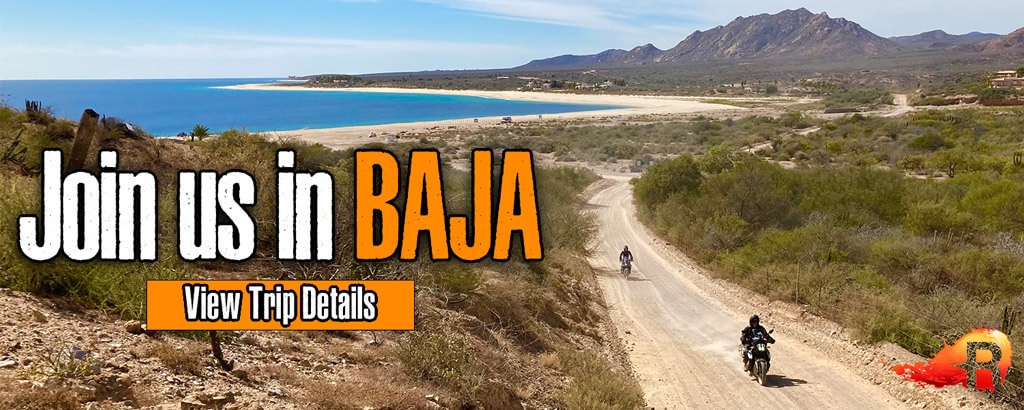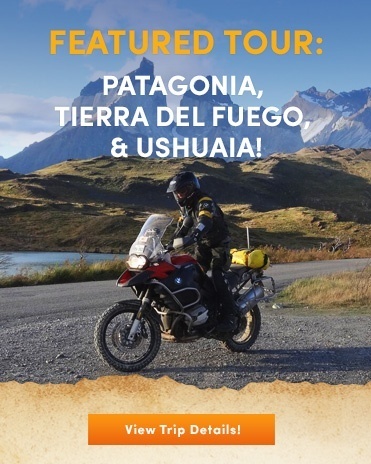
The first electric adventure motorcycles have finally hit the market, but are these battery-powered touring machines the real deal, or ADVs in name only?
It seems just yesterday the sight of a Tesla on the open road was something of a novelty, like seeing a Humvee or a Meyers Manx dune buggy passing in oncoming traffic. Visit any major city now and chances are you'll lose count of electric cars within the first five minutes.
And while the success of electric vehicles is clear to see, the practicality of electric motorcycles remains a hot topic. Both range and recharging remain sticking points for most potential owners, which is why the recent introduction of so called "electric adventure bikes" is so perplexing.
Are these plug-in ADVs worthy of the open road, or are manufacturers putting the cart before the horse to cash in on the popular adventure segment? Today we'll dive into the debate surrounding the latest crop of battery-powered touring bikes.
What Makes an Adventure Bike Adventure-Worthy?
There are a few different schools of thought out there when it comes to ADVs. Some folks say the best adventure bike is the bike you already own, and the act of exploring on two wheels in itself is adventure riding.
While we're inclined to agree in principle, when a bike is advertised as an adventure bike nowadays, we riders expect a few things in particular. The first is decent touring manners, as adventure touring is, after all, long-distance touring at its core.
 "I was lucky enough to demo the first version of the Zero electric motorcycle for testing"
"I was lucky enough to demo the first version of the Zero electric motorcycle for testing"
Most of us would agree that a proper touring bike should be comfortable, happy to cruise on the highway for hours on end, and still a damn good time on a twisty road. We also expect somewhere in the neighborhood of 150-200 miles out of a tank of gas, a reliable engine that won't leave us stranded when exploring parts unknown, and the ability to haul enough stuff for a few nights on the road.
Of course these things all apply to standard touring/sport touring bikes, and it's the dual-purpose on-road/off-road nature of an adventure bike that makes it special. To that end we also expect a reasonable amount of suspension travel, some extra ground clearance, and decent manners in the dirt whether it's a maintained gravel road or something more extreme.
Electric motorcycles have come a long way in the last decade, but can they meet the basic requirements of real adventure touring? We spent a few months living with an electric ADV earlier this year and have a few crucial talking points worth sharing.
Let's Talk Range.
We'll address the elephant in the room first. Range anxiety is a real thing, and you'll experience it every time you take your bike outside of the city limits.
That's because just like electric cars, electric adventure bikes are extremely efficient at slower speeds around town, but when traveling over 60 mph on the highway, you can practically watch your battery meter drain with each passing mile. Crank that up to 80 and you've got a real problem on our hands.

Some electric manufacturers are more transparent about this than others, but they all seem to pad their numbers to some degree. Much like the estimated MPG figures advertised on gas-powered vehicles, real-world riding typically involves a much heavier throttle hand than EPA testing permits.
This means even if manufacturers aren't intentionally trying to pull the wool over customer's eyes, their claimed ranges rarely translate to the firsthand experience of day-to-day use.
This leaves adventure riders with an inconvenient decision to make: Do we stick to the thrilling acceleration and 70-80mph highway cruise we're used to and risk running out of juice, or do we resign ourselves to life in the slow lane with a light throttle hand and an eco-friendly power mode?
Ride, Charge, Wait, Repeat
Truth be told, the best electric adventure bikes have already achieved fairly workable range figures for long distance travel. Granted, they haven't hit the 200-miles-per-tank mark found on bikes like the BMW GS1300 or Yamaha T7, but the biggest of the bunch reliably return somewhere between 100 and 150 miles on a full charge.
Is 100 miles to a tank ideal? Absolutely not. Will it stop you from traveling? We'd argue no.
 In fact in our experience the main obstacle to traveling on an electric adventure bike is actually recharging. Most bikes leveraging level 2 charging stations still require about 2 hours of downtime to refill the tank, and that's a big ask even for a leisurely mid-day lunch break.
In fact in our experience the main obstacle to traveling on an electric adventure bike is actually recharging. Most bikes leveraging level 2 charging stations still require about 2 hours of downtime to refill the tank, and that's a big ask even for a leisurely mid-day lunch break.
Compare that to the typical 5 minutes required to fill up a tank of gas, take a leak, and buy a bottle of water at your typical fuel station, and you'll start to see the dilemma: Planning around charging is a major inconvenience.
Charging Availability
As if a two-hour stop weren't a big enough ask, the other major hurdle to electric touring is tracking down a charging station in the first place. The bulk of the current charging infrastructure is centered around major cities and towns, which are exactly what most of us want to avoid when we're out on an adventure ride.
Consider this: depending on who you ask, there are somewhere between 150,000 and 200,000 gas stations scattered across the US. Over 90% of those are open to the general public (no Costco membership required), and they're rarely more than 10 miles apart.
 "Currently we've got about 65,000 viable charging stations in the US according to the US Department of Energy. Most of them are still centered around major cities."
"Currently we've got about 65,000 viable charging stations in the US according to the US Department of Energy. Most of them are still centered around major cities."
Current US Department of Energy statistics estimate there are roughly only 75,000 EV charging stations scattered throughout the country. Of those, only about 65,000 provide the necessary level 2 charging, and only 12,000 of those include the most efficient DC Fast Charging function.
It's also worth noting that if you live anywhere east of Reno or west of Fort Worth, you're pretty much out of luck, Colorado notwithstanding. For the time being, that rules out the lion's share of epic Backcountry Discovery Routes for the plug-in crowd unless you're planning on carrying a gas generator in your panniers.
Can Electric Bikes Adventure?
Despite everything we just said, the answer here is still yes. Where there's a will there's a way, and if you have your doubts, we're here to tell you it's already been done.
In fact electric motorcycle enthusiast Tucker Neary completed the entire Colorado BDR back in 2021 aboard the previous Zero DSR Black Woods edition, which had a much smaller battery (14.4 kWh) than the current crop of flagship electric adventure motorcycles.

Granted, the trip was touch and go and range anxiety was a central feature of the adventure, but ultimately the bikes succeeded in conquering 1,000 miles through the Rocky Mountains using only publicly available charging infrastructure. Neary says he wouldn't do it again given the chance, but he proved an important point in the undertaking: Challenges are what make any adventure feel adventurous, and going electric adds another layer of challenge to say the least.
It's also worth noting that while combined range figures are still the best yardstick we have to measure the actual capability of electric motorcycles, the optimistic "city range" provided by manufacturers is a pretty damn good indicator of "off-road range" for more adventurous riders.
Off-roading typically involves speeds well under 50 mph, and also includes regular uphill/downhill elevation changes as well. This allows electric adventure bikes to take full advantage of their onboard regenerative braking function, which significantly boosts range when you're off the beaten path.
So Are There Any Real Electric Adventure Motorcycles?
Taking the above factors into consideration, there are really only two motorcycles that could be considered potential electric ADVs: The Zero DSR/X, and the Energica Experia. Here's how they stack up in all the ways that matter.
2024 Zero DSR/X
 Specs:
Specs:
- MSRP: $22,995
- Combined range: 107 miles (claimed)
- Recharge time: 2.2 hours (0 - 95%, standard Lvl 2 charging)
- Weight: 545 lbs (247 kg)
- Horsepower: 100 hp (75 kW)
- Torque: 169 ft-lb (229 Nm)
- Top Speed: 100 mph
We'll start with what we know firsthand, which is Zero's latest and greatest, the DSR/X. We spent a few months living with Zero's first full-sized "adventure" rig and all things considered, it's a fantastic motorcycle.
 "Team RIDE testing the first iteration of Zero's adventure motorcycle"
"Team RIDE testing the first iteration of Zero's adventure motorcycle"
The DSR/X is all-day comfortable, handles with aplomb on a twisty mountain road, and delivers massive torque on demand that's satisfying to the point of addiction. We'd go so far as to say the DSR/X is essentially the perfect motorcycle for running around town or taking shorter day trips, but as the rides get longer, the big Zero starts to lose its luster.
We consistently got just over 100 miles of range to a charge when mixing equal parts city and highway riding, which means a full day of touring duty will require at least one extended stop to recharge the bike's sizable 17.3 kWh battery.
 "5-inch full color TFT display gives you a crystal clear view"
"5-inch full color TFT display gives you a crystal clear view"
How long it takes to refill largely depends on your local charging infrastructure, but even if you manage to find a proper level 2 charger somewhere along your route, you're looking at a good two hours or more to get the bike back up around 80-90% battery.
That inconvenient fact throws a major wrench in the spokes for touring duty considering the best roads and destinations are often well off the beaten path and require long highway miles to get to and from.
Best case scenario, you'll be able to stop for lunch somewhere with a level 2 charging station, but in most parts of the country that's wishful thinking at best.
 "No fuel means extra storage space!"
"No fuel means extra storage space!"
The DSR/X's touring prowess can be improved somewhat by opting for either the extra power tank (which adds roughly 20 miles to the total range) or Zero's rapid charging accessory (which cuts recharge time down to about an hour).
Both upgrades will set you back another $3,000 though (you can only choose one as they both install in the same location), and neither actually "solves" the range or recharging issue outright.
2024 Energica Experia
 Specs:
Specs:
- MSRP: $25,880
- Combined range: 160 miles
- Recharge time: 40 minutes (0 - 80%, DC fast charge mode 4)
- Weight: 573 lbs (260 kg)
- Horsepower: 100 hp (75 kW)
- Torque: 85 ft-lb (664 ft-lb claimed at rear wheel)
- Top Speed: 112 mph
The "other" electric adventure motorcycle worth considering is the new Energica Experia, which the Italian manufacturer markets as the world's first "green tourer." With a laser focus on distance and efficiency, the Experia's massive 22.5 kWh battery boosts the bike's total claimed range to 160 miles of mixed highway and around-town use.

While we haven't logged any seat time on the Experia ourselves, there's enough information out there from current owners and "first rides" to get a clear picture of what to expect.
Long story short, if you can swallow the premium Italian price tag, the Experia is the best deal going for all-electric two-wheeled touring.
That's because in addition to the Experia's best-in-class battery capacity, the bike also benefits from the best charging tech currently available via DC Fast charging.
This is the same CCS style charging available at Tesla's current "Magic Dock" supercharging stations, which allows the Experia to be charged from 0-80% in just 40 minutes.

Now we're talking. Of course while the ability to charge the Experia is vastly improved, access to chargers is still fairly limited in many parts of the US.
Chances are you'll still need to plan your day around a charging station at some point, especially if you're riding any significant distance on the freeway as tourers typically do.
Closing Thoughts on Electric Adventure Motorcycles
Do electric adventure motorcycles exist in the current day and age? We would argue yes, but he'd also argue they're still lightyears away from competing with gas bikes when it comes to touring duty.
 Sure, they have their advantages. Maintenance is practically non-existant, the on-demand torque is obnoxiously fun, and a single speed transmission is great for clutch-free off-road work. Still, electric ADVs are heavy, expensive, and largely inconvenient for long range travel.
Sure, they have their advantages. Maintenance is practically non-existant, the on-demand torque is obnoxiously fun, and a single speed transmission is great for clutch-free off-road work. Still, electric ADVs are heavy, expensive, and largely inconvenient for long range travel.
With that being said, the electric experience is wildly different than what most of us are used to, and new experiences are at the heart of any good adventure. Battery-powered touring offers its own flavor of challenge and reward, and if you ride in an area with decent charging infrastructure, we believe it's an experience worth having.
→Read More: Best Adventure Motorcycle Gear For Any RIDE and The 6 Best Adventure Motorcycle Jackets: Budget vs Top End Comparison.








